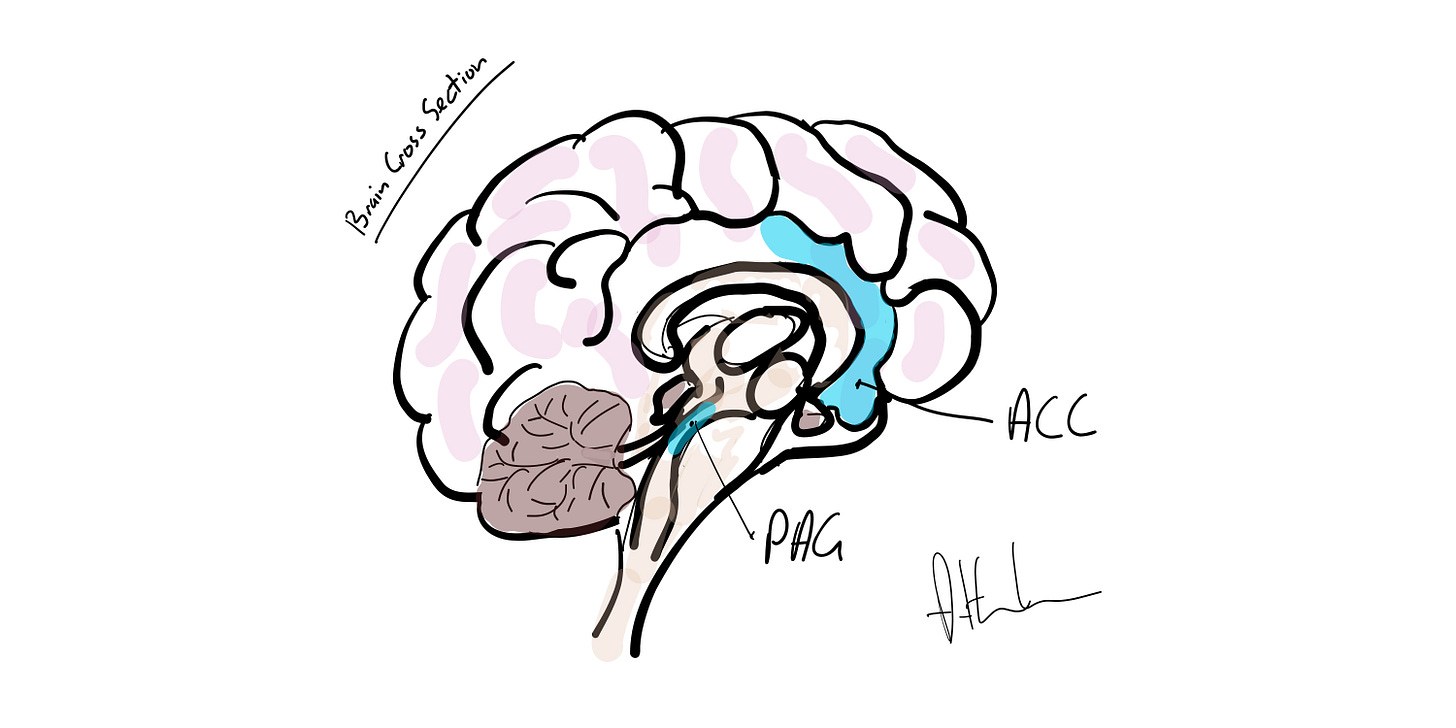Research Hit: How Your Brain Feels Others' Pain
New research has mapped empathy circuits in the brain
You mean empathy, right?
Yes, this is the true meaning of empathy feeling with another person - feeling with another person whether physical or emotionally. But here it is feeling someone else’s physical pain.
I recently watched the European Athletics Indoor Championship and there were a number of situations when I really felt with the athletes. One was a British female athlete, Amber Anning, a top 400m runner who was disqualified for overstepping the inside line on her track. Something I have also experienced - she was devastated and in tears. I felt for her.
Similarly I watched as a German long jumper crumpled on the run way as her legs gave way - it was painful to watch, particularly in slow motion.
Haven’t we already discovered empathy in the brain? It seems like a thing that many neuroscientists would be interested in?
Yes, there has been plenty of research but getting to the precise mechanism in detail is difficult. We know, for example, that two regions known as the Insula (review here) and Anterior Cingulate Cortex (ACC) (review here) are involved.
But now a Korean team of researchers have been able to view this in precise detail.
Tell me more!
First the researchers mapped the precise location in mice who observed another mouse getting a mild electrical shock to the foot. This can trigger what is known as empathic freezing when they respond in the same way as if they had received the shock themselves - in this case freezing.
What they found is that there were specific neurons in the ACC that responded when mice received the shock and when they observed the shock. An important note is that the observers where what they called naive observers i.e. they hadn’t experienced the foot shock themselves so it is not calling on a trained network.
Ok, but were pain circuits activated then?
No, not exactly. The circuit closely resembles the affective neural representation - showing feeling or experiencing the pain without the pain. When we view someone who hurts themselves such as the athlete I outlined above - we don’t actually feel the sharp stab of pain but it may trigger a visceral and emotional response.
They then tracked these neural pathways to an area in the brainstem called the periaqueductal gray (PAG), which is involved in fear and pain regulation. This shows that viewing pain is triggering the same basic primitive pathways as pain itself.
What’s more the researchers using optogenetics could activate or deactivate these circuits. This enables researchers to see if the circuit is really causing the behaviour - and yes, when this circuit was deactivated empathic responses were significantly inhibited.
So we have now seen the empathy circuit?
Yes, this is solid evidence - however, remember that everything in the brain is really complex and empathy is a complex phenomenon so there will be multiple circuits influencing this and this may depend on the type of empathy. But this does gives us very clear insights into how specific empathy circuits operate.
But what about people with low empathy?
Well, it basically means their brains are not responding to the stimuli as in above - I have reported on some of this in a review on toxic behaviours and brain research here that shows differential brain activation in those who lack empathy or are psychopathic.
So, as you always say, it’s all biological.
Indeed, our brains, are designed to be empathic, biologically. It’s how we get along in groups, with friends, and in society.
Reference
Jiye Choi, Young-Beom Lee, Dahm So, Jee Yeon Kim, Sungjoon Choi, Sowon Kim, Sehoon Keum.
Cortical representations of affective pain shape empathic fear in male mice.
Nature Communications, 2025; 16 (1)
DOI: 10.1038/s41467-025-57230-w





